Special Issue (Plants ) | Volume 7 | Number 2 | 2015
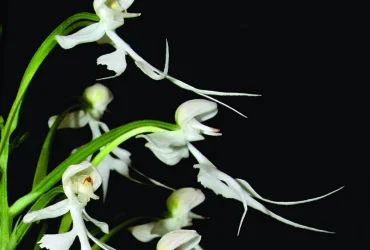 v7i2.166
v7i2.166ISSN: 1800-427X (print)
eISSN: 1800-427X (online)
DOI:10.47605/tapro.v7i2.166
Submitted date: 9 July 2014
Accepted date: 17 July 2014
Published date: 20 February 2015
Pp. 68–71, Pls. 1–2.
DISCOVERY OF THE CRITICALLY ENDANGERED BULBOUS HERB Crinum woodrowii (AMARYLLIDACEAE) & ITS NEOTYPIFICATION
R. Kr. Singh* & Arti Garg
*Corresponding author. E-mail: rksbsiadsingh@yahoo.co.in
Abstract
A single population of a critically endangered species, Crinum woodrowii, was discovered from Katraj Ghat, Pune District, Maharashtra, at a location other than its type location. A neotype of the species is designated here and its detailed description, distribution, habitat, IUCN threat status, and nomenclatural notes are provided.
Key words : habitat, Katraj Ghat, Maharashtra, neotype, new locality, taxonomy
Section Editor: James L. Reveal
eISSN: 1800-427X (online)
DOI:10.47605/tapro.v7i2.166
Submitted date: 9 July 2014
Accepted date: 17 July 2014
Published date: 20 February 2015
Pp. 68–71, Pls. 1–2.
DISCOVERY OF THE CRITICALLY ENDANGERED BULBOUS HERB Crinum woodrowii (AMARYLLIDACEAE) & ITS NEOTYPIFICATION
R. Kr. Singh* & Arti Garg
*Corresponding author. E-mail: rksbsiadsingh@yahoo.co.in
Abstract
A single population of a critically endangered species, Crinum woodrowii, was discovered from Katraj Ghat, Pune District, Maharashtra, at a location other than its type location. A neotype of the species is designated here and its detailed description, distribution, habitat, IUCN threat status, and nomenclatural notes are provided.
Key words : habitat, Katraj Ghat, Maharashtra, neotype, new locality, taxonomy
Section Editor: James L. Reveal
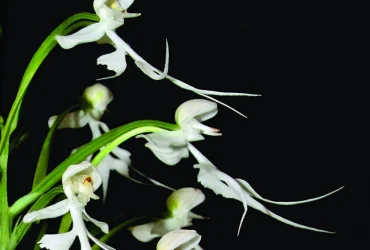 v7i2.181
v7i2.181ISSN: 1800-427X (print)
eISSN: 1800-427X (online)
DOI:10.47605/tapro.v7i2.181
Submitted date: 8 December 2014
Accepted date: 8 January 2015
Published date: 20 February 2015
Pp. 118–119.
Tylophora rotundifolia (Asclepiadaceae) in Sitamata Wildlife Sanctuary, Rajasthan, India
S.K. Sharma*
*Corresponding author. E-mail: sksharma56@gmail.com
Sitamata Wildlife Sanctuary (74°25'-74°40E and 24°04'-24°23'N), is situated in the Chittorhgarh and Pratapgarh districts of Rajasthan, India. It covers an area of 423 km2. According to Champion and Seth (1968), the forest of the sanctuary is tropical deciduous, dominated by Sagwan (Tectona grandis L.f.), Mahuwa (Madhuca indica J.F. Gmel.), Charoli (Buchanania lanzan Spreng.), Sadar (Terminalia tomentosa Wight & Arn.) , Kohda (Terminalia arjuna (Roxb. ex DC.) Wight & Arn.), Baheda (Terminalia bellirica (Gaertn.) Roxb.), Timru (Diospyros melanoxylon Willd.), Rohan (Soymida febrifuga (Roxb.) A. Juss.), Belpatra (Aegle marmelos (L.) Corrêa), Salar (Boswellia serrata Roxb.), Aam (Mangifera indica L.), Amla (Emblica officinalis Gaertn.), Haldu (Adina cordifolia[i] (Roxb.) Brandis), Bargad ([i]Ficus benghalensis L.), Dhawada (Anogeissus latifoliai (Roxb. ex DC.) Wall. ex Guillem. & Perr.) etc.
Section Editor: James L. Reveal
eISSN: 1800-427X (online)
DOI:10.47605/tapro.v7i2.181
Submitted date: 8 December 2014
Accepted date: 8 January 2015
Published date: 20 February 2015
Pp. 118–119.
Tylophora rotundifolia (Asclepiadaceae) in Sitamata Wildlife Sanctuary, Rajasthan, India
S.K. Sharma*
*Corresponding author. E-mail: sksharma56@gmail.com
Sitamata Wildlife Sanctuary (74°25'-74°40E and 24°04'-24°23'N), is situated in the Chittorhgarh and Pratapgarh districts of Rajasthan, India. It covers an area of 423 km2. According to Champion and Seth (1968), the forest of the sanctuary is tropical deciduous, dominated by Sagwan (Tectona grandis L.f.), Mahuwa (Madhuca indica J.F. Gmel.), Charoli (Buchanania lanzan Spreng.), Sadar (Terminalia tomentosa Wight & Arn.) , Kohda (Terminalia arjuna (Roxb. ex DC.) Wight & Arn.), Baheda (Terminalia bellirica (Gaertn.) Roxb.), Timru (Diospyros melanoxylon Willd.), Rohan (Soymida febrifuga (Roxb.) A. Juss.), Belpatra (Aegle marmelos (L.) Corrêa), Salar (Boswellia serrata Roxb.), Aam (Mangifera indica L.), Amla (Emblica officinalis Gaertn.), Haldu (Adina cordifolia[i] (Roxb.) Brandis), Bargad ([i]Ficus benghalensis L.), Dhawada (Anogeissus latifoliai (Roxb. ex DC.) Wall. ex Guillem. & Perr.) etc.
Section Editor: James L. Reveal
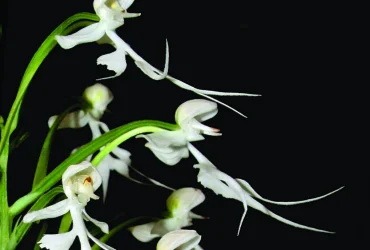 v7i2.180
v7i2.180ISSN: 1800-427X (print)
eISSN: 1800-427X (online)
DOI:10.47605/tapro.v7i2.180
Submitted date: 2 November 2014
Accepted date: 8 January 2015
Published date: 20 February 2015
Pp. 114–117.
On the occurrence of Memecylon capitellatum (Memecylaceae) in India
R. Kottaimuthu*, N. Vasudevan & A. Saravanan
*Corresponding author. E-mail: kottaimuthu@yahoo.co.in
The paleotropical genus Memecylon L. (Memecylaceae DC. or Melastomataceae Juss. subfam. Olisbeoideae Burnett) has about 150–300 species. It is mainly distributed from tropical Africa, Madagascar, southeastern Asia and northern Australia to the Fiji Islands. In India, it is represented by about 32 species, of which 13 are endemic to Western and Eastern Ghats of southern India. Various workers have added 23 additional species for India either as new species or as new records.
Section Editor: James L. Reveal
eISSN: 1800-427X (online)
DOI:10.47605/tapro.v7i2.180
Submitted date: 2 November 2014
Accepted date: 8 January 2015
Published date: 20 February 2015
Pp. 114–117.
On the occurrence of Memecylon capitellatum (Memecylaceae) in India
R. Kottaimuthu*, N. Vasudevan & A. Saravanan
*Corresponding author. E-mail: kottaimuthu@yahoo.co.in
The paleotropical genus Memecylon L. (Memecylaceae DC. or Melastomataceae Juss. subfam. Olisbeoideae Burnett) has about 150–300 species. It is mainly distributed from tropical Africa, Madagascar, southeastern Asia and northern Australia to the Fiji Islands. In India, it is represented by about 32 species, of which 13 are endemic to Western and Eastern Ghats of southern India. Various workers have added 23 additional species for India either as new species or as new records.
Section Editor: James L. Reveal
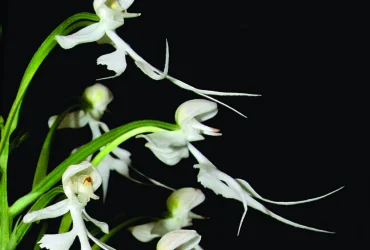 v7i2.179
v7i2.179ISSN: 1800-427X (print)
eISSN: 1800-427X (online)
DOI:10.47605/tapro.v7i2.179
Submitted date: 16 October 2014
Accepted date: 8 January 2015
Published date: 20 February 2015
Pp. 111–113, Pl. 12.
A new location for Hubbardia heptaneuron (Poaceae)
R. Kr. Singh* & A. Garg
*Corresponding author. E-mail: rksbsiadsingh@yahoo.co.in
Presumed to have become extinct, the pendulous annual grass, Hubbardia heptaneuron Bor, became the subject of immense botanical interest due to its unusual habitat preference. Hubbardia Bor with a single species, H. heptaneuron, was described by N.L. Bor (1951) on the basis of two specimens sent to him through Rev. H. Santapau (1903–1970). These specimens were actually collected in 1919 by L.J. Sedgwick (1883–1925) from Jog Falls, then known as Gersoppa Falls. Initially placed under tribe Isachneae Benth. by Bor, the extremely habitat and morphological characters of the new genus entirely differentiated this remarkable species from all other grasses of the world. This led to the establishment of a monogeneric tribe, Hubbardieae C.E. Hubb. Hubbardia heptaneuron was thought to have been rediscovered in 2002 on the basis of a 2000 S.R. Yadav collections from Tillari Ghat, Kolhapur District in Maharashtra.
Section Editor: James L. Reveal
eISSN: 1800-427X (online)
DOI:10.47605/tapro.v7i2.179
Submitted date: 16 October 2014
Accepted date: 8 January 2015
Published date: 20 February 2015
Pp. 111–113, Pl. 12.
A new location for Hubbardia heptaneuron (Poaceae)
R. Kr. Singh* & A. Garg
*Corresponding author. E-mail: rksbsiadsingh@yahoo.co.in
Presumed to have become extinct, the pendulous annual grass, Hubbardia heptaneuron Bor, became the subject of immense botanical interest due to its unusual habitat preference. Hubbardia Bor with a single species, H. heptaneuron, was described by N.L. Bor (1951) on the basis of two specimens sent to him through Rev. H. Santapau (1903–1970). These specimens were actually collected in 1919 by L.J. Sedgwick (1883–1925) from Jog Falls, then known as Gersoppa Falls. Initially placed under tribe Isachneae Benth. by Bor, the extremely habitat and morphological characters of the new genus entirely differentiated this remarkable species from all other grasses of the world. This led to the establishment of a monogeneric tribe, Hubbardieae C.E. Hubb. Hubbardia heptaneuron was thought to have been rediscovered in 2002 on the basis of a 2000 S.R. Yadav collections from Tillari Ghat, Kolhapur District in Maharashtra.
Section Editor: James L. Reveal
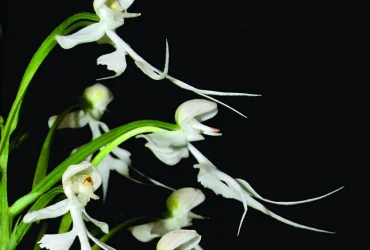 v7i2.178
v7i2.178ISSN: 1800-427X (print)
eISSN: 1800-427X (online)
DOI:10.47605/tapro.v7i2.178
Submitted date: 23 November 2014
Accepted date: 30 December 2014
Published date: 20 February 2015
Pp. 107–110.
Crotalaria globosa (Fabaceae): An overlooked endemic legume of India
R. Kottaimuthu* & N. Vasudevan
*Corresponding author. E-mail: kottaimuthu@yahoo.co.in
The genus Crotalaria, commonly known as ‘rattle pods’, is one of the more prolific genera in Fabaceae Lindl., with about 690 species distributed throughout the tropics. In India, the genus is represented by 93 species and in Tamil Nadu 53 species, of which five entities are endemic to Tamil Nadu: C. digitata Hook., C. fysonii var. glabra Gamble, C. globosa Wight, C. kodaiensis Debb. & Biswas. and C. ramosissima Roxb. var. ramnadensis A.A. Ansari. In connection with the documentation of legumes of Dindigul District for a doctoral dissertation by the first author, a few interesting specimens of Crotalaria were collected from Batlakundu and Ottanchathram hill ranges of Dindigul District. Critical study with relevant literature has confirmed it as Crotalaria globosa Wight. The type specimens, housed in the online herbaria of Kew and Edinburg, were also studied to ascertain identity of species.
Section Editor: James L. Reveal
eISSN: 1800-427X (online)
DOI:10.47605/tapro.v7i2.178
Submitted date: 23 November 2014
Accepted date: 30 December 2014
Published date: 20 February 2015
Pp. 107–110.
Crotalaria globosa (Fabaceae): An overlooked endemic legume of India
R. Kottaimuthu* & N. Vasudevan
*Corresponding author. E-mail: kottaimuthu@yahoo.co.in
The genus Crotalaria, commonly known as ‘rattle pods’, is one of the more prolific genera in Fabaceae Lindl., with about 690 species distributed throughout the tropics. In India, the genus is represented by 93 species and in Tamil Nadu 53 species, of which five entities are endemic to Tamil Nadu: C. digitata Hook., C. fysonii var. glabra Gamble, C. globosa Wight, C. kodaiensis Debb. & Biswas. and C. ramosissima Roxb. var. ramnadensis A.A. Ansari. In connection with the documentation of legumes of Dindigul District for a doctoral dissertation by the first author, a few interesting specimens of Crotalaria were collected from Batlakundu and Ottanchathram hill ranges of Dindigul District. Critical study with relevant literature has confirmed it as Crotalaria globosa Wight. The type specimens, housed in the online herbaria of Kew and Edinburg, were also studied to ascertain identity of species.
Section Editor: James L. Reveal
Hubungi Kami
The ultimate aim of the journal is to provide an effective medium for communication of the latest and best scientific information.
Copyright © 2020 Taprobanica. All Rights Reserved
Jasa Pembuatan Website by IKT




